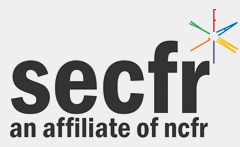Proposal Focus
Practice
Presentation Type
Presentation
Abstract
Public policy has been shifting from child abuse and neglect (CAN) intervention toward prevention, using public health style frameworks, which emphasize shared community and legislative responsibilities to support families (Browne, 2014; CDC, 2014). Analysis of qualitative data from statewide focus groups held in 2019 in Alabama with 99 community-based CAN prevention workers shows strengths in community collaboration, but also, struggles to help families meet basic needs because of lack of community resources, such as transportation and quality child care, and other barriers, including stigma. The results demonstrate confusion between prevention, which is intended to build family resilience to avert crisis, and intervention, meant to reunite families after child protection services involvement. We recommend researchers consistently link CAN research to prevention frameworks so as to build meaningful understanding how to create better prevention programs. Future practitioners should understand prevention, and be prepared to document their work so as to demonstrate need.
Keywords
child abuse and neglect prevention, public health, prevention, appreciative inquiry, community-based research, Alabama
Location
Yorkshire
Start Date
3-4-2020 2:05 PM
End Date
3-4-2020 3:15 PM
Included in
Community-Based Research Commons, Family, Life Course, and Society Commons, Social Work Commons
Engaging with a Prevention Approach: System Supports Needed in Child Abuse and Neglect Prevention
Yorkshire
Public policy has been shifting from child abuse and neglect (CAN) intervention toward prevention, using public health style frameworks, which emphasize shared community and legislative responsibilities to support families (Browne, 2014; CDC, 2014). Analysis of qualitative data from statewide focus groups held in 2019 in Alabama with 99 community-based CAN prevention workers shows strengths in community collaboration, but also, struggles to help families meet basic needs because of lack of community resources, such as transportation and quality child care, and other barriers, including stigma. The results demonstrate confusion between prevention, which is intended to build family resilience to avert crisis, and intervention, meant to reunite families after child protection services involvement. We recommend researchers consistently link CAN research to prevention frameworks so as to build meaningful understanding how to create better prevention programs. Future practitioners should understand prevention, and be prepared to document their work so as to demonstrate need.
![Southeastern Council on Family Relations Conference [2018-2020]](/assets/md5images/a0d3661d5139dc9b769a57be6f085156.png)

